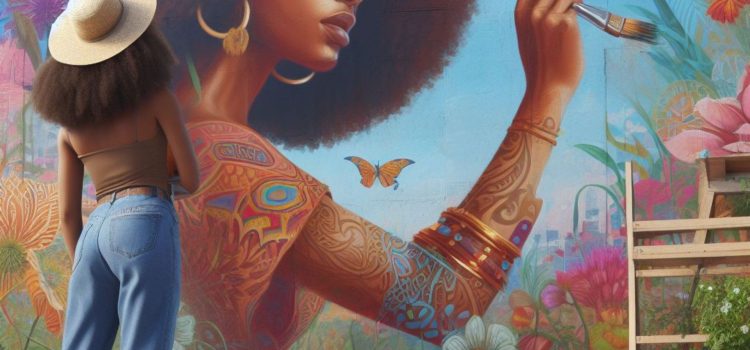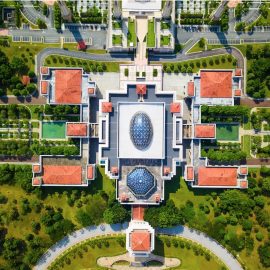
What does it mean to be Black in America? How can African Americans embrace and enjoy shared culture?
Black American identity is complex in that Black Americans are still marginalized today, requiring resilience from members of the community—but there are still avenues for celebration, joy, and beloved traditions. In fact, this joy can be the very basis of resilience.
Read on to see how Ta-Nehisi Coates describes his own experience of forming Black American identity in his book Between the World and Me.
The Complexities of Black Identity and Community
In his book Between the World and Me, Ta-Nehisi Coates reflects on the shared cultural traditions, challenges, and resilience that are woven into the intricate tapestry of Black identity and experience. He speaks to the beauty of his Black world, which includes the ease of relationships, the marvelous atmosphere at Howard University, and the vibrant feelings experienced in Harlem. He depicts the communal space at Howard University as a vibrant display of the varied experiences, cultural heritage, challenges, and resilient spirit of the Black community.
The author’s experiences in cities like Baltimore, Philadelphia, and Chicago underscore the pervasive challenges that necessitate resilience among African American neighborhoods. Coates observed that the African American community in his vicinity employed cultural elements such as music, fashion, and language to claim control over their own lives and bodies.
Coates uncovered profound meanings in the poetry that vividly depicted the diverse and dynamic aspects of Black American life, encompassing the everyday lives of family members and young women on city stoops, enriching the depiction of Black individuals. He recognized the shared cultural traditions, struggles, and resilience in the community that went beyond the simplified stories of firearms or uprisings.
Conflict Between Blending in and Maintaining Cultural Identity
At some periods in his life, Coates wrestled with the dilemma of assimilating while preserving his unique cultural identity. He challenges the reasoning behind assertions of civilization, emphasizing the difficulty in maintaining equilibrium between assimilation and preserving cultural identity. The author’s analysis highlights the tension between assimilation and preserving cultural identity by examining how schools depict the fight for civil rights.
Coates brings attention to the challenges of merging with a society that diminishes Black identity while maintaining the richness and vitality of Black cultural heritage. He experienced tension between different ideologies and approaches to Black identity, such as integration versus nationalism. The author reflects on the differences between his existence and the “other world,” indicating a struggle between blending in and maintaining his cultural heritage.
Search for Belonging and Purpose
The discussion on race and identity is inherently linked to the pursuit of inclusion and importance in a society that has historically marginalized and dehumanized Black individuals based on race. Coates describes the continuous quest for identity and meaning among Black individuals, a journey made complex by the systemic obstacles and racial awareness they face.
The author’s journey, which includes his years at Howard University and subsequent move to New York, reflects his search for belonging and understanding within the complexities of Black identity. Coates explores the difficulties Black individuals encounter in establishing themselves in a community that marginalizes them, highlighting the importance of historical context to thoroughly understand these challenges.
This narrative of moving through different neighborhoods and witnessing various cultural interactions reflects the ongoing search for belonging and understanding an individual’s role within a multifaceted society. He underscores the necessity for his son to cultivate consciousness without having to conceal his authentic identity to satisfy others, emphasizing the quest for self and significance in a culture that often denies these to Black individuals.
(Shortform note: The nuanced exploration of Black identity and community delves into the intricate tapestry of shared cultural traditions, challenges, and resilience that define the Black experience across America. It involves understanding the complexities of maneuvering through various realms and identities, including the conflict between blending in and maintaining one’s cultural identity. This exploration also encompasses the search for a sense of belonging and purpose within a society that has historically marginalized and dehumanized Black individuals based on race.)






